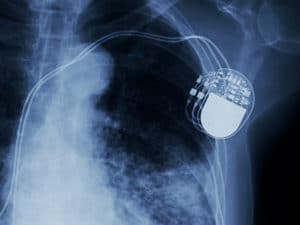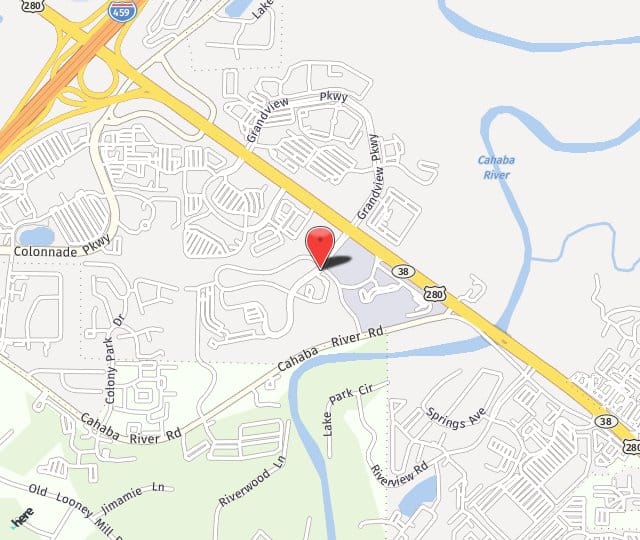
What is a pacemaker?
A pacemaker is a small device that Dr. Smith implants under the skin of your chest. It has a generator and leads/wires, and its job it to help control your heartbeat. It mimics your heart’s natural pacemaker, known as the sinus node, which produces electrical impulses to stimulate your heart to beat.
The pulse generator is a small metal container that houses the pacemaker battery and the electrical circuitry that regulates the rate of electrical pulses sent to the heart. Depending on the problem with your heart, the pulse generator is connected to one to three flexible, insulated wires that run through a blood vessel into the chamber, or chambers, or your heart. These wires deliver the electrical pulses to adjust your heart rate.
An implanted pacemaker monitors the person’s heartbeat. If it is too slow, the pacemaker will send impulses to increase the heartbeat. Pacemakers have sensors to detect body motion or breathing rate, which signals the pacemaker to increase your heart rate during exercise to meet the need for increased blood and oxygen.
What conditions would merit a pacemaker?
Dr. Smith may implant a pacemaker when a patient’s heart beats too slowly (bradycardia) or simply has abnormal rhythm (arrhythmia). Special cardiac pacemakers can be used to treat symptoms of heart failure. This could be the case in patients with congestive heart failure, where the heart muscle is weakened or thickened.
The goal is to get the heart to beat in a normal rhythm, and the pacemaker can do that.
How is a pacemaker implanted?
Contrary to what you may think, this is not a difficult procedure. Dr. Smith usually performs these procedures with the patient under local anesthesia. The generator is usually placed under the skin near the collarbone on the left side of the chest.
The generator is attached to up to three wires that are guided through a blood vessel to the heart. This is done through the same two-inch incision used to place the generator. The leads are guided along the vein into the correct chamber of the patient’s heart using x-ray scans. They then become lodged in the heart tissue. The other ends of these wires are connected to the pacemaker, the pacemaker tested, and the incision is closed.
If you’re having problems with your heart’s rhythm, it’s time to call Dr. Smith at (205) 510-5000.

